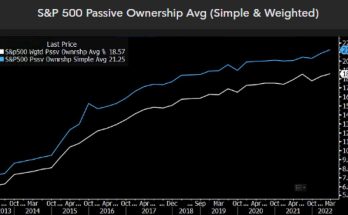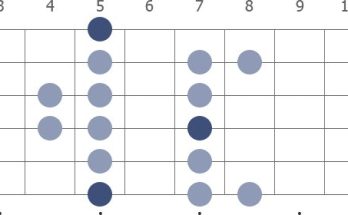In boxing, “split decision” occurs when the judges cannot agree on a clear winner after a match. This outcome often sparks debate and speculation among fans and experts. It adds a layer of excitement and unpredictability to the sport, leaving spectators on the edge of their seats. Let’s delve deeper into what this term truly means in the world of boxing and how it impacts the fighters involved. So, what does split decision mean in boxing, and why does it hold such significance in the ring? Let’s find out.
What Does Split Decision Mean in Boxing
Welcome to our guide on understanding the term “split decision” in the exciting world of boxing. If you’ve ever watched a boxing match and heard the announcer declare the winner by a split decision, you might have wondered, “What does that mean?” Let’s dive into the details of what a split decision entails in the context of boxing.
What is Boxing and How is it Scored
Before we delve into the concept of a split decision, let’s briefly explain what boxing is all about. Boxing is a combat sport where two opponents engage in a contest of strength, skill, and strategy inside a ring. The objective is to outscore or knockout your opponent within a set number of rounds. In a professional boxing match, scoring is crucial to determine the winner.
Scoring in Boxing Matches
Boxing matches are typically scored by a panel of judges who observe the action and assign points to each boxer based on criteria such as effective punches, defense, ring generalship, and overall control of the fight. The scoring system can vary depending on the boxing organization or specific rules of the match.
Decision Types in Boxing
When a boxing match goes the distance (i.e., all scheduled rounds are completed without a knockout or technical knockout), the outcome is determined by a decision. There are three main types of decisions in boxing:
- Unanimous Decision: All three judges agree on the same winner.
- Majority Decision: Two judges score in favor of the same boxer, while the third judge scores a draw.
- Split Decision: Two judges score in favor of one boxer, while the third judge scores in favor of the other boxer.
Understanding Split Decisions
Now that we know the basic types of decisions in boxing, let’s focus on the intriguing split decision. A split decision occurs when two of the three judges at ringside score the fight in favor of one boxer, while the remaining judge scores the fight for the other boxer. This scenario often leads to a closer and more contentious outcome compared to a unanimous decision.
Factors Influencing a Split Decision
Several factors can contribute to a split decision in boxing:
- Styles Make Fights: Boxers with contrasting styles can make it challenging for judges to reach a unanimous verdict, leading to a split decision.
- Close Rounds: If the rounds are closely contested with both fighters having moments of success, judges may have differing opinions on the winner.
- Aggressiveness vs. Control: Judges may favor aggressive fighters over those who display more controlled and defensive tactics, resulting in split decisions.
Implications of a Split Decision
For the boxers and fans, a split decision often adds to the drama and excitement of a fight. It signifies a close and competitive bout where the opinions of the judges diverge on the outcome. In some cases, a split decision can lead to controversy and debates among boxing enthusiasts.
Examples of Memorable Split Decisions
Throughout the history of boxing, there have been numerous memorable fights that ended in a split decision. These fights captivated audiences and showcased the skill and determination of the boxers involved. Let’s highlight a few noteworthy examples:
Roy Jones Jr. vs. Felix Trinidad (2008)
In this highly anticipated showdown between two boxing legends, Roy Jones Jr. and Felix Trinidad put on a spectacular performance that went the distance. The judges ultimately rendered a split decision in favor of Jones, leading to intense discussions among fans and experts.
Gennady Golovkin vs. Canelo Alvarez II (2018)
The rematch between Gennady Golovkin and Canelo Alvarez was a closely contested battle that ended in a split decision victory for Alvarez. The razor-thin margin of victory and differing scores from the judges added to the drama surrounding the fight.
Manny Pacquiao vs. Juan Manuel Marquez IV (2012)
The fourth encounter between Manny Pacquiao and Juan Manuel Marquez resulted in a split decision win for Marquez. The back-and-forth nature of the fight and the judges’ varied assessments of the fighters’ performances further solidified the rivalry between these two great boxers.
In conclusion, a split decision in boxing signifies a closely contested fight where judges have differing opinions on the outcome. It adds an element of suspense and intrigue to the sport, keeping fans on the edge of their seats until the final verdict is announced. Understanding the concept of split decisions enhances our appreciation for the artistry and skill displayed by boxers in the ring.
Next time you watch a boxing match and hear the words “split decision,” you’ll have a deeper understanding of what it means for the fighters and the sport as a whole. Keep enjoying the thrilling world of boxing and stay tuned for more exciting matchups in the future!
What Does Split Decision Mean In Boxing? – Knock Out Reels
Frequently Asked Questions
What factors contribute to a split decision in boxing?
A split decision in boxing occurs when two out of the three judges score the bout in favor of one boxer, while the third judge scores it for the other boxer. Factors that can contribute to a split decision include differing perceptions of effective aggression, clean punching, defense, and ring generalship by the judges.
How is a winner determined in a split decision?
In a split decision, the boxer who receives the majority of the judges’ votes is declared the winner. This means that if two judges score the bout in favor of one boxer, that boxer wins the fight, regardless of the third judge’s decision. The winner is based on the total points awarded by the judges.
Can a split decision result in a draw in boxing?
No, a split decision cannot result in a draw in boxing. In a split decision, one boxer will always be declared the winner, even if the decision is not unanimous. The scoring system ensures that there is a clear winner in each bout, even if the decision is split among the judges.
Final Thoughts
In boxing, a split decision occurs when two out of three judges score the fight in favor of one boxer, while the third judge scores it in favor of the other. This often leads to debates among fans and analysts. Understanding what split decision means in boxing is crucial for comprehending the outcome of closely contested matches. Ultimately, a split decision result signifies a close and competitive fight that could have gone either way.




